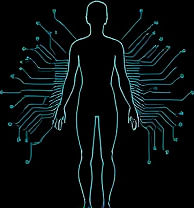Optimizing Daily Rhythms with Circadian Lighting Systems
 by Shanie Goodwin
by Shanie Goodwin
Circadian lighting systems align artificial light with natural day-night cycles, boosting sleep quality and energy levels. By mimicking sunlight, these systems aid health optimization through better hormone regulation and focus, making them essential for modern wellness routines.

Circadian lighting systems use advanced technology to replicate the sun's natural patterns, helping align our internal body clocks. This approach supports overall health by influencing sleep patterns and daily energy.
How Circadian Lighting Works
Circadian lighting adjusts color and intensity based on the time of day. For instance, it provides bright, blue-enriched light in the morning to signal wakefulness. As evening approaches, it shifts to warmer tones that prepare the body for rest. These systems often involve smart bulbs or fixtures that respond to schedules.
One key aspect is their role in regulating melatonin production, a hormone vital for sleep. By circadian lighting, individuals can experience improved rest without major lifestyle changes.
Benefits for Health Optimization
Using these systems can lead to better cognitive function and mood stability. Research shows that proper light exposure enhances alertness during the day. For those focused on personal enhancement, this means more productive hours and reduced fatigue.
Additionally, health optimization through circadian lighting may lower the risk of issues like insomnia or seasonal mood shifts. People report feeling more refreshed after adopting such routines, turning everyday environments into tools for well-being.
Wearable technology complements this by tracking light exposure and sleep data. Devices like fitness trackers can sync with lighting setups to provide personalized recommendations. This integration allows for a seamless blend of tech and biology.
Incorporating into Daily Life
To start, select systems that fit your living space, such as LED lights with adjustable settings. Many options connect via apps for easy control.
For example, setting up a routine might involve bright lights for morning activities and dimming them in the evening. Over time, users notice enhancements in their daily rhythms.
Pairing wearable technology with circadian lighting offers real-time feedback. A tracker might alert you if light levels are off, prompting adjustments for optimal results.
The Science Behind Personal Enhancement
Studies indicate that consistent light patterns can influence gene expression related to metabolism and stress response. This makes circadian lighting a practical method for long-term health gains.
Individuals interested in biohacking find value here, as it provides a non-invasive way to fine-tune biological processes. By focusing on light as a core element, one can achieve noticeable improvements in vitality.
Practical Tips for Implementation
Begin with simple changes, like installing dimmable lights in key areas. Monitor effects over a few weeks to see progress. Combine this with other habits, such as regular exercise, for compounded benefits.
It's also helpful to avoid screens before bed, as their light can disrupt natural cycles. With biohacking in mind, treat your environment as an active part of your health strategy.
In summary, circadian lighting systems offer a straightforward path to better health. By aligning with our natural rhythms, they pave the way for enhanced well-being and performance in everyday life.
